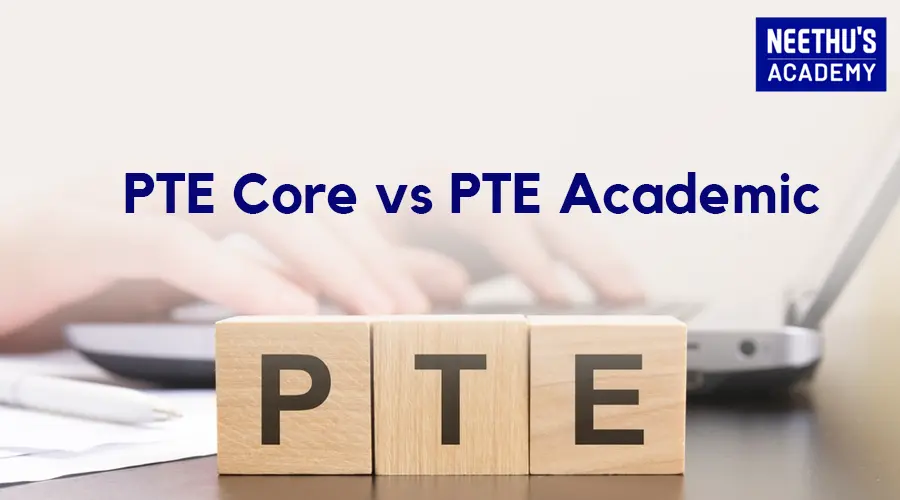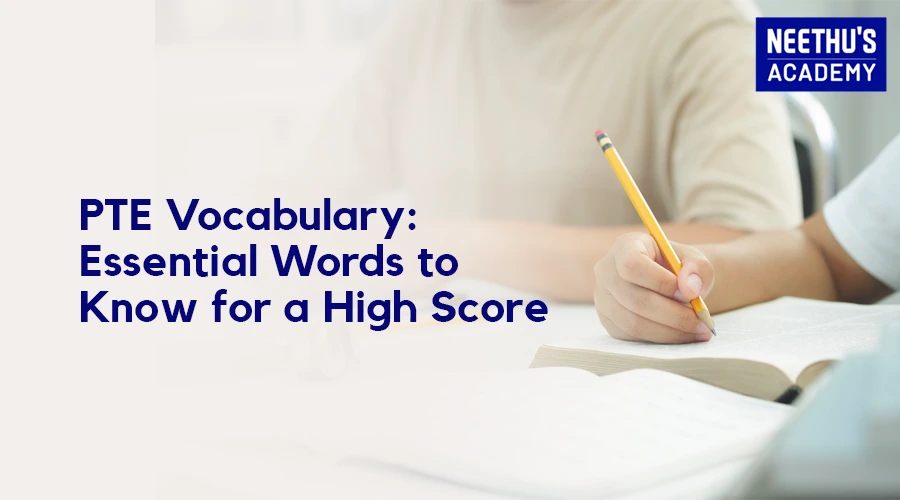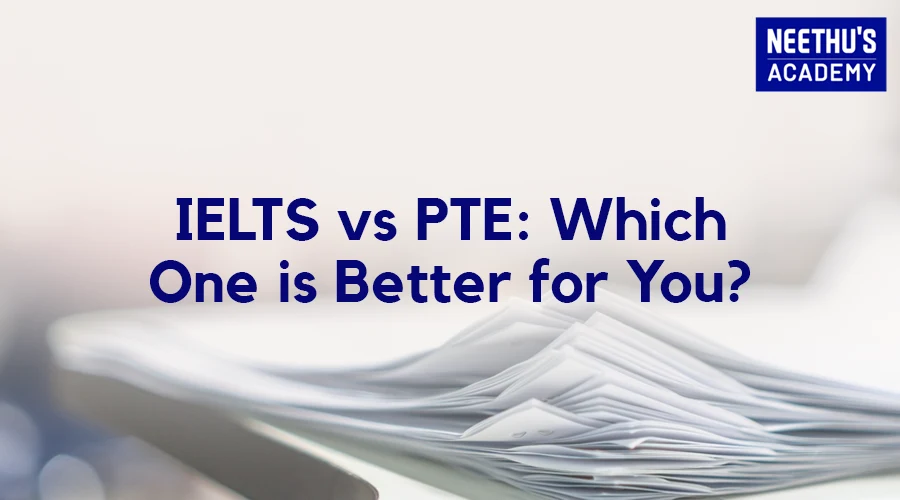PTE Core vs PTE Academic: Know the Difference to Choose Correctly
Navigating the landscape of English proficiency tests can be a decisive step in your academic and professional journey. Among the options available, PTE Core and PTE Academic stand out as two distinctive tests, each tailored to different needs and objectives.
In this blog, we will explore the unique characteristics of PTE Core and PTE Academic, providing a clear and insightful comparison to help you determine which test best aligns with your goals. Join us as we break down their formats, highlight their key differences, and offer practical tips for choosing and preparing for the test that will pave the way to your success.
What is PTE Core?
PTE Core is the latest entrant into the Pearson Test of English family, precisely designed to test language skills at a professional level. While PTE Academic tests English used in academics, PTE Core measures practical language skills that are actually being put into use in professional interactions effectively. This test is, therefore, ideal for professionals, job seekers, and people applying for professional certifications or immigration. It is based on real life-based scenarios and formulated in a manner to capture all the language requirements that any candidate is expected to confront in a work environment.
PTE Core Test Format
PTE Core test is formulated and designed to test proficiency in four vital language skills of Listening, Reading, Speaking, and Writing. Each section is said to be formulated to mirror the typical workplace communications tasks.
Listening: This part assesses the comprehension of spoken English in a business context. In this section, the candidate is required to listen to various recordings around situations like a meeting, presentation, or customer interaction and answer the questions regarding the recording. Examples of items could be some form of oral information summarization, comprehension questions based on the key idea, and the inferred meaning.
Reading: Assesses the reading comprehension skills of the candidates with written texts based on workplace scenarios like reading emails, reports, memos, and many other professional documents. Through multiple-choice questions, text reordering, and tasks to complete the sentences with appropriate words.
Speaking: Candidates are taken to task on their appropriate verbal communication in work-related situations. It involves giving presentations, participating in discussions, and attending to questions in the workplace. The emphasis should be on clarity, fluency, and the ability to put across ideas effectively.
Writing: This module assesses the capability of writing coherently and relevantly. Test-takers may be asked to write an email, report, or summary according to the prompt. Such tasks assess one’s capability to organize, use language, and make the flow of information clear and professional.
What is PTE Academic?
PTE Academic is the best-recognized form of the Pearson Test of English, created for academic functions. Thousands of leading educational institutions, universities, and government immigration departments around the globe accept it. PTE Academic is used to recognize one’s ability to use English in an academic setting, becoming a requirement that has to be met if one wishes to enter a higher education institution in countries that use the English language or to seek professional registration/immigration.
PTE Academic Test Format
Listening: It includes candidates’ listening to lectures, discussions, and presentations that have an academic nature with questions, either selected responses or fill-in-the-blank, based on their content. Such tasks include summarizing spoken text, identifying the main idea, and interpreting details relevant to academic subjects.
Reading: This section is purposely provided to test the comprehension of academic text from books, research articles, and academic journals. Test takers must answer multiple-choice questions, and reorder paragraphs.
Speaking: The candidates can express themselves clearly in an academic setting. All these tasks integrate the description of images, re-telling of lectures, and response to questions based on academic content. Emphasis is put on clarity, fluency, and the ability to express complex ideas.
Writing: This domain represents how well the test-takers can compose academic text. It includes writing essay pieces, summary or summation of written content, and relating to academic questions. The tasks focus on organization, language use, and the ability to present ideas clearly and coherently.
Key Differences Between PTE Core and PTE Academic
While both PTE Core and PTE Academic test the same four language skills, they target two different test-taker populations and have different purposes. Let’s see the most important differences:
| Aspect | PTE Core | PTE Academic |
|---|---|---|
| Purpose | Designed for professional and workplace contexts. | Tailored for academic and higher education purposes. |
| Target Audience | Job seekers, professionals, and those needing professional certifications or immigration. | Students, academics, and individuals applying for higher education or migration. |
| Content Focus | Workplace communication and practical language use. | Academic English, including reading and writing for higher education. |
| Test Format | Includes tasks such as summarizing spoken information, understanding workplace documents, and giving presentations. | Includes tasks such as summarizing lectures, understanding academic texts, and writing essays. |
| Recognition | Accepted by some employers and professional bodies; recognition varies. | They are widely accepted by universities, colleges, and immigration authorities globally. |
| Scoring | Scored from 10 to 90 points, focusing on practical communication skills. | She scored from 10 to 90 points, focusing on academic language proficiency. |
| Preparation Materials | Focuses on professional scenarios and workplace language tasks. | Focuses on academic texts, lectures, and essays. |
| Typical Test Length | Around 2 hours. | Approximately 3 hours. |
Which Test to Tak:PTE Core vs PTE Academic
Which PTE test you choose will depend on your specific goals and needs. Things you should consider include:
Purpose: Check if you require it for work, employment, or studies. PTE Core will help you meet work-related demands, and PTE Academic suits best for admissions to academic institutions or migration.
Recognition: Check whether the test is accepted and recognized by institutions or organizations you intend to apply to. Be sure that it matches the requirements of your target institution or employer.
Content Familiarity: How comfortable are you with what is in the test? If you feel comfortable about professional language use, then PTE Core can be your preference. If what you feel comfortable about is the academic setting, then PTE Academic can be more appropriate.
Test Availability: Make sure to check in advance the actual dates and locations of the tests available. The two tests are conducted at many test centers around the world, but the availability is not the same.
Preparation: View the preparation as related to your preparedness for the test. If you are comfortable employing academic expressions and carrying out academic tasks, then PTE Academic preparation would be more useful in this regard. On the other hand, if your line of interest is in the workplace communications domain, then PTE Core preparation is more related.
Preparation Tips
Preparation for any of these test plays a very vital role towards scoring well. Below are some more tips that can help in good preparation:
Do Practice Exams: Regularly expose yourself to practice exams with the aim of being familiar with the test format, time limits, and the question types presented. This way, you can identify any weaknesses and areas where you need to improve.
Official Study Materials: Official preparation consists of material in the form of preparation guides, resources, and practice materials, all of which can be found in many different sources, including Pearson and other reputable companies. The format of the test content can be assumed to be set the same way as in an actual test.
Develop Language Skills: Work on developing your overall language skills, including vocabulary, grammar, and pronunciation. Read regularly and listen, speak, and write extensively in order to help you with fluency.
Join Study Groups: Join a study group or an online forum where you can intermingle with people attempting the test, share materials, and get encouragement. Collaborative learning can really help in motivating and gaining feedback.
Stay Organized: Make a study plan that clearly shows what you will study at each session, when you will study it, and where you are up to at each point. Keeping yourself organized and following a structured plan will help in time management and keeping on course.
To summarize;
PTE Core and PTE Academic both contribute to assessing English language proficiency. However, these two serve different purposes and contexts. Knowing the big differences between these tests and being aware of exactly what you are in search of should enable you to make an informed decision that will cater to all your needs. Be it workplace communication skills or academic proficiency that you desire to attain, with proper preparation and a clear understanding of test format, you will achieve the score you need to succeed in professional or academic settings.
Frequently Asked Questions





